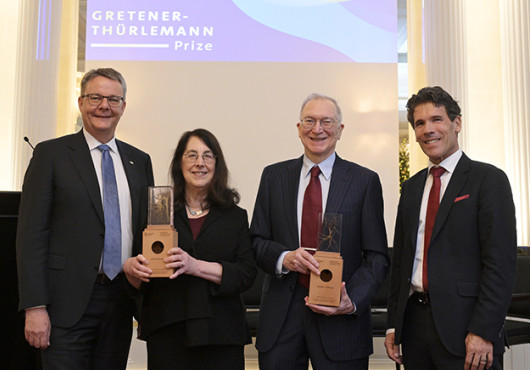The immune system is engaged in a constant war, protecting us from armies of invading pathogens. Being able to respond quickly and effectively to these attacks means the difference between health and disease. Scientists have now deciphered key molecular circuits that enable the body to distinguish among viruses, bacteria and other microbes, elucidating how mammalian immune cells identify and fend off a host of invaders.
The underlying biological question is simple: What mechanism do immune cells use to mount pathogen-specific responses? Senior author Nir Hacohen, an HMS assistant professor at Massachusetts General Hospital and at the Broad Institute, first observed differential responses in primary mouse dendritic cells while working as a Whitehead Institute fellow.
In the current study, Ido Amit, a joint postdoctoral fellow in Hacohen’s lab and the lab of senior author Aviv Regev at the Broad, MIT and Howard Hughes Medical Institute, used a blend of gene expression arrays, RNA interference technologies and bioinformatics to identify genes that activate or repress the response to pathogens. Their work was accomplished remarkably quickly, within two years from start to accepted publication.
The investigation began by acquiring profiles of gene expression at different time points across the entire genome in mouse dendritic cells exposed to different stimuli. Expression levels were then analyzed to identify potential regulator genes that are themselves regulated by gene transcription and also predict the activation of other gene modules. Additionally, signature target genes that represented the entire genetic activation profile were selected.
From there, the team generated a validated library of short hairpin RNA (shRNA) complementary to all candidate regulators, with more than 100 genes selected for the study. This library was used to knock down each candidate independently in the mouse immune cells. Following shRNA treatment, the cells were stimulated with lipopolysaccharide (LPS), a major component of Gram-negative bacteria. Analysis of the signature target genes’ mRNA levels in treated cells revealed a regulatory network of associated regulators with individual targets as well as overall cellular responses.
While many expected regulators were found, many other regulators identified by the screen were not originally suspected to be involved in such direct immune responses. Moreover, the researchers pinpointed a remarkable number of connections between regulators and additional system components; some regulators provided coarse adjustments to the immune response while others fine-tuned and tailored responses as needed. One intriguing “coarse tuner” is called Timeless, a circadian clock protein in fruit flies. In mammalian dendritic cells, Timeless is a chief regulator of antiviral responses, controlling more than 200 genes.
Though these findings are primarily mechanistic in nature, they possess important medical implications by advancing the understanding of immune-response networks. In addition, the methods employed in the study could be readily adapted toward studies of other regulatory networks in other cell types in a relatively cheap, fast, yet effective way.
The study appears in the Sept. 3 online edition of Science.
Students may contact Nir Hacohen at nhacohen@partners.org for more information.
Conflict Disclosure: The authors declare no conflicts of interest.
Funding sources: The Human Frontier Science Program Organization; the American Physicians
Fellowship for Medicine in Israel; National Institutes of Health; the Burroughs Wellcome Fund; and the Sloan Foundation; the content of the work is the responsibility solely of the authors.


